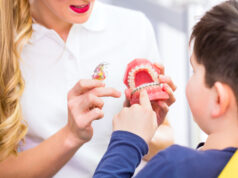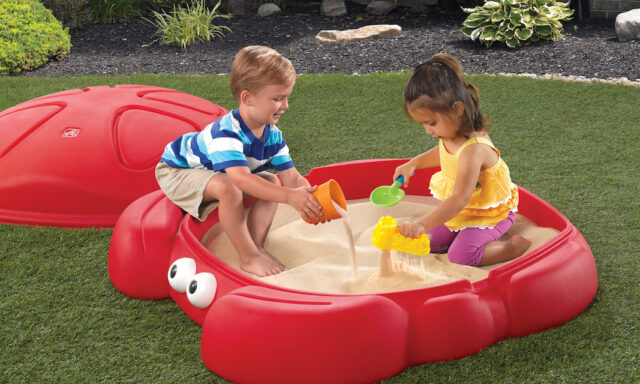
Combining your child’s playtime while ensuring proper growth and development is something that every parent should strive for. These days there are many new possible playing options for your child that we didn’t have access to, however, nothing comes close to a sandbox.
However, many parents are worried that the sand may cause a disaster situation. The child may try to eat it, or sand may get in their eyes. For that reason, this entertainment method is only a great fit when the child is ready.
To help you determine when is the right time to let your kid play in the sandbox, we have made this article. Keep reading and get informed more about this topic, including all the benefits, safety issues, and possible alternatives.
Definition of a sandbox
A sandbox is a sand-filled area that is usually closed by tiny walls. It resembles the beach with the difference that your kid is being put inside the enclosure and observed while playing.
Inside the box, there can be various toys that your child can explore both for digging the sand and for building creations. Because of the edges of the box, the kid can only work with the sand inside and they cannot get dirty enough to cause you problems.
Sandbox variations
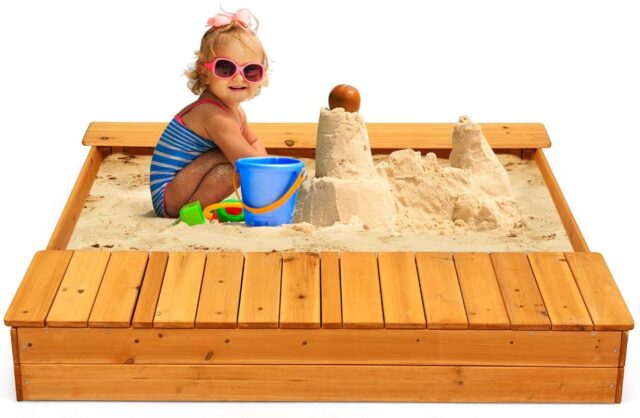
Although the purpose of these variations is the same, we need to go through them and explain them better so you can select the most appropriate option.
The first variation is the regular sandbox. They can be shaped like squares or circles, but they are all basic and closed areas with sand inside. This option is the most present on the market so its availability makes them the most common box.
The second variation is a sandbox with a roof. These are a great option if you want additional UV sun or rain protection for your kid while enjoying their time playing. These can have a bit more advantages like this sandbox from Aivituvin. It’s got cover and a bench to make your child’s playtime even more safe and fun.
Lastly, we have the tables filled with sand. They are great fit for indoor use. Their wideness offers various playing options. However, your child needs to be careful not to throw any sand inside or be prepared for frequent cleaning and vacuuming jobs.
What is the appropriate age for playing
Usually, children can be let inside a sandbox as soon as they turn one. However, this is dependent on your youngster since everybody is different. They can be prepared to play on the sand before their first birthday, but you will need to be more cautious.
We are waiting for the phase where they put things inside their mouth to end so unwanted sand swallowing or suffocation can be prevented. For that reason, children from one and a half years and older have the appropriate age to play on sands.
Benefits
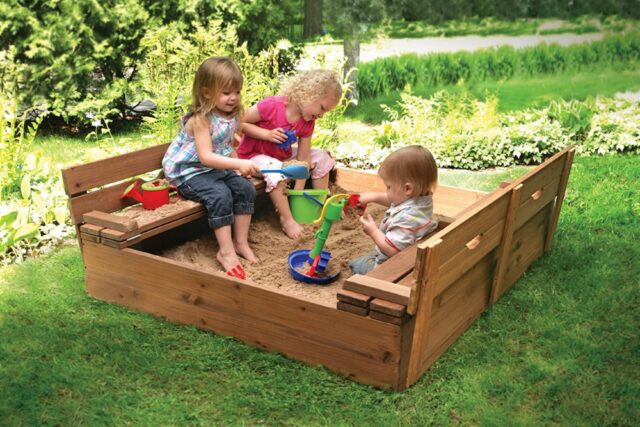
Most parents find the sandbox a favorite entertainment solution for their children, and that is because of a reason. Besides the fun, it has various other benefits that can be used for further development.
It firstly improves the motoric function of the extremities and lets your child control them better. In addition, their other sensory organs develop quicker since they touch and feel various figures. The social activities when playing with other kids give them an upper hand and prepare them for school days.
Safety concerns
Whenever you let them play, make sure you are close and observe them. Since that is a new environment for them, there may be problems where your reaction will be important. For that reason, you need to understand what safety hazards can arise so you can be quick in reacting.
As one of the problems that can occur is a corneal abrasion. This happens when small particles get in the eye and rub and irritates the outer portion of the eyes. Whenever something gets inside, we are constantly blinking because of a reflex that only worsens the situation.
If you see them trying to touch their eyes, intervene quickly to prevent deeper scratches and seriously complicating the condition. In addition, you can try to get the sand out using water. However, if you are unsuccessful, bring them to a medic quickly.
In addition, the sands need to be chosen carefully. If you get silica or limestone sands, they can cause serious lung damage when inhaled. For that reason, you should prioritize getting a natural river or sea sand option.
One thing that needs to be remembered is that these situations rarely happen. Playing in a box is usually a safe option, and that is why most parents are comfortable with this choice.
Safety promotion
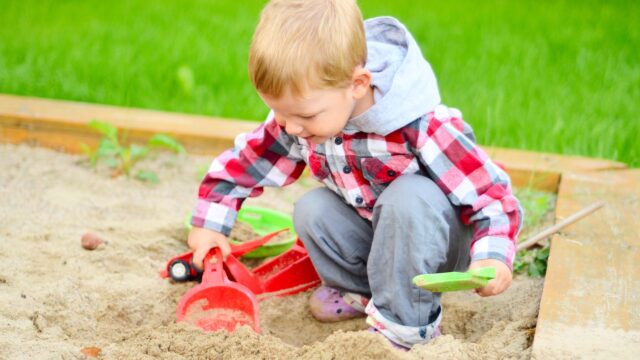
As mentioned above, you should always have one grown-up to stay close and observe the little ones. Besides health issues, they can easily stand up and get away which will cause a stressful situation.
Ensuring the cleanliness of the box is essential for making it a safe place for playing. Whenever your youngster is not playing, you should always cover the sand and keep it closed until the next session. The sand needs to be left to dry before closing to prevent the collection of microorganisms.
In addition, the box needs to be maintained with regular raking to remove all the clumps collected.
Lastly, and most importantly, never let pets go inside the playing area since they usually defecate there and that is a serious cause of all fecal-oral diseases.
How long should the playing last
The longevity of the periods your kid spends in the sandbox is regulated only by you. However, the sessions should not last more than an hour or two. The child becomes bored, and they are more likely to create a problem.
Instead, let them play with other things such as running around the yard, or if you are living in an apartment, feel free to visit the park.
Don’t forget to bring snacks and liquids for when they get tired. In addition, bring other requisites such as balls for situations if they become bored too quickly.

